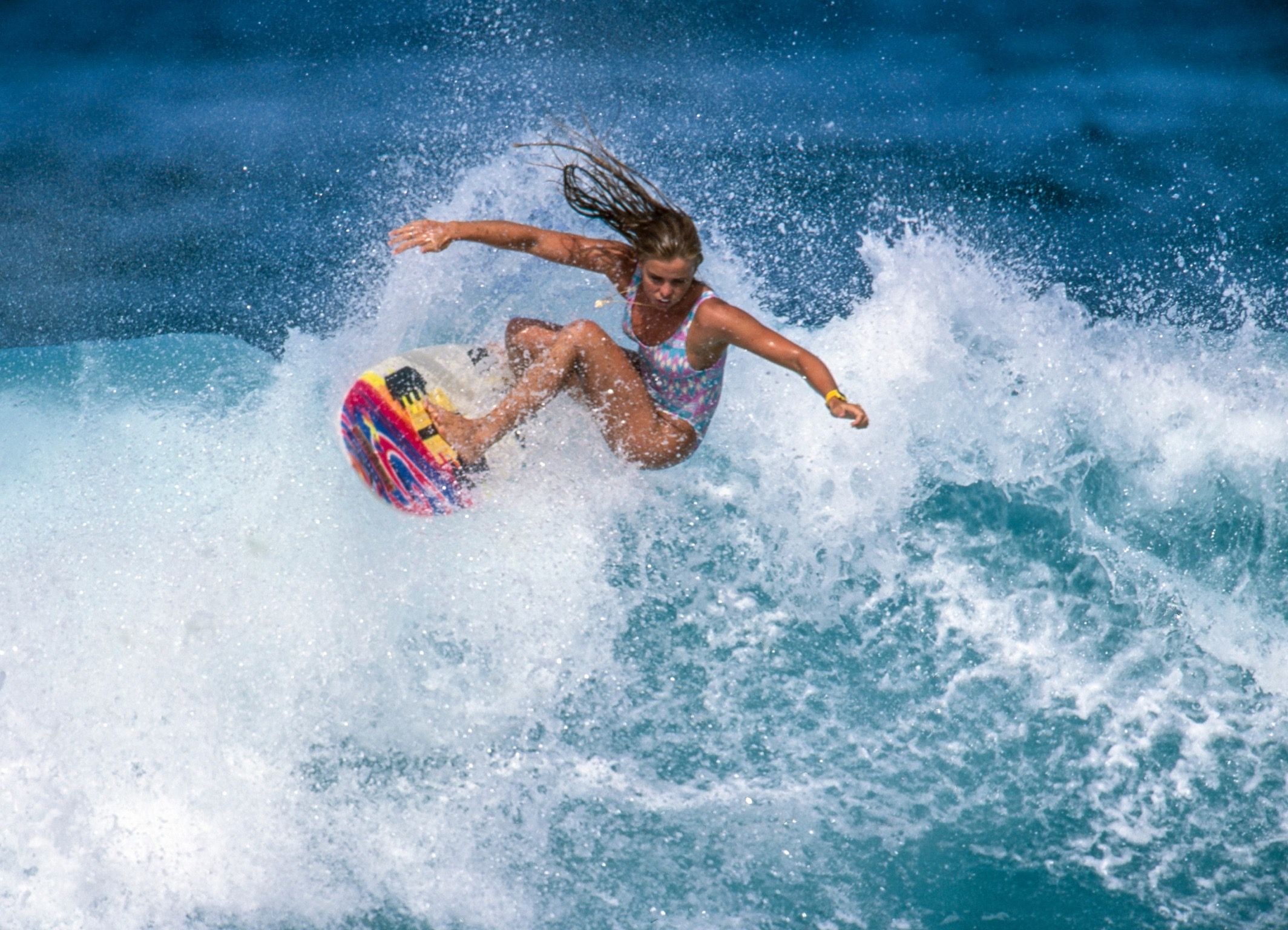Written by Mackenzie Stolp
“They wanted a woman to surf like a man, look like a woman – there was all these things that you had to be, to be accepted” – Jodie Cooper
The politics of gender equality in professional surfing is a little discussed topic – but Christopher Nelius and Julie Anne De Ruvo are uncovering the tribulations in their surfing documentary Girls Can’t Surf. Backed with a riot-grrl-esuq soundtrack and archival footage, the story of several female surfers and their fight for equal waves and pay in Girls Can’t Surf makes for a compelling documentary that is both entertaining and informative.
The competitive surfing world seems like an idyllic dream – with sun-kissed skin, beach bodies, traveling the world, the thrill and adrenaline that comes from a sport such as surfing, all while getting paid to do it. Throughout the late 1970s and 1980s, the surfing culture was held as a paramount lifestyle, where the male surfers were held to Adonis status. However, the same luxury was not afforded to female surfers of the time. Girls Can’t Surf uses their own voices of peak female surfers such as Pauline Menczer and Layne Beachley to describe the injustices they were facing personally.
Australian culture celebrates and idolises the surfing lifestyle, Lane Beachley is a household name and the perception of surfers living by the ocean has almost become an Australian dream – but right up until 2018 this dream was inaccessible to female surfers. One of the major topics throughout the documentary is the massive discrepancies between pay for male and female surfers. Instances where men were receiving more than 10 times the reward money as the women surfers, if the women were given money at all that is. The majority of the women on the surf tours could barely afford to participate in the tour, let alone make a living wage off their surf reward. Keep in mind this is for the world champions of the sport.
Other topics covered range from the physical standard women were held to, to appear as supermodels, and also the scrutiny for being same-sex attracted as several of the female professional surfers was. To fit the mould of what is considered a ‘decent’ female surfer the women had to be attractive to the men and attracted to the men. Is this a common theme throughout Australian sports and Girls Can’t Surf highlighted how the men’s ideas and expectations for their fellow women counterparts caused an immense amount of pressure. Not only did female surfers have to be the perfect athletes who could match the men’s performances on waves a quarter of the size, but they also were expected to be conventionally attractive women who were available to men.
Girls Can’t Surf is an in-depth and first-hand account of the struggles faced by female surfers from the 1970s to now. Focusing on interviews and archival footage gives the film a sense of importance and accuracy, hearing the surfers discuss their own history made the impact of this film all so much more paramount. A must-watch for the progress of equal rights for female sportspeople, as Australian women continue the fight for equal opportunity, equal pay and equal respect.

